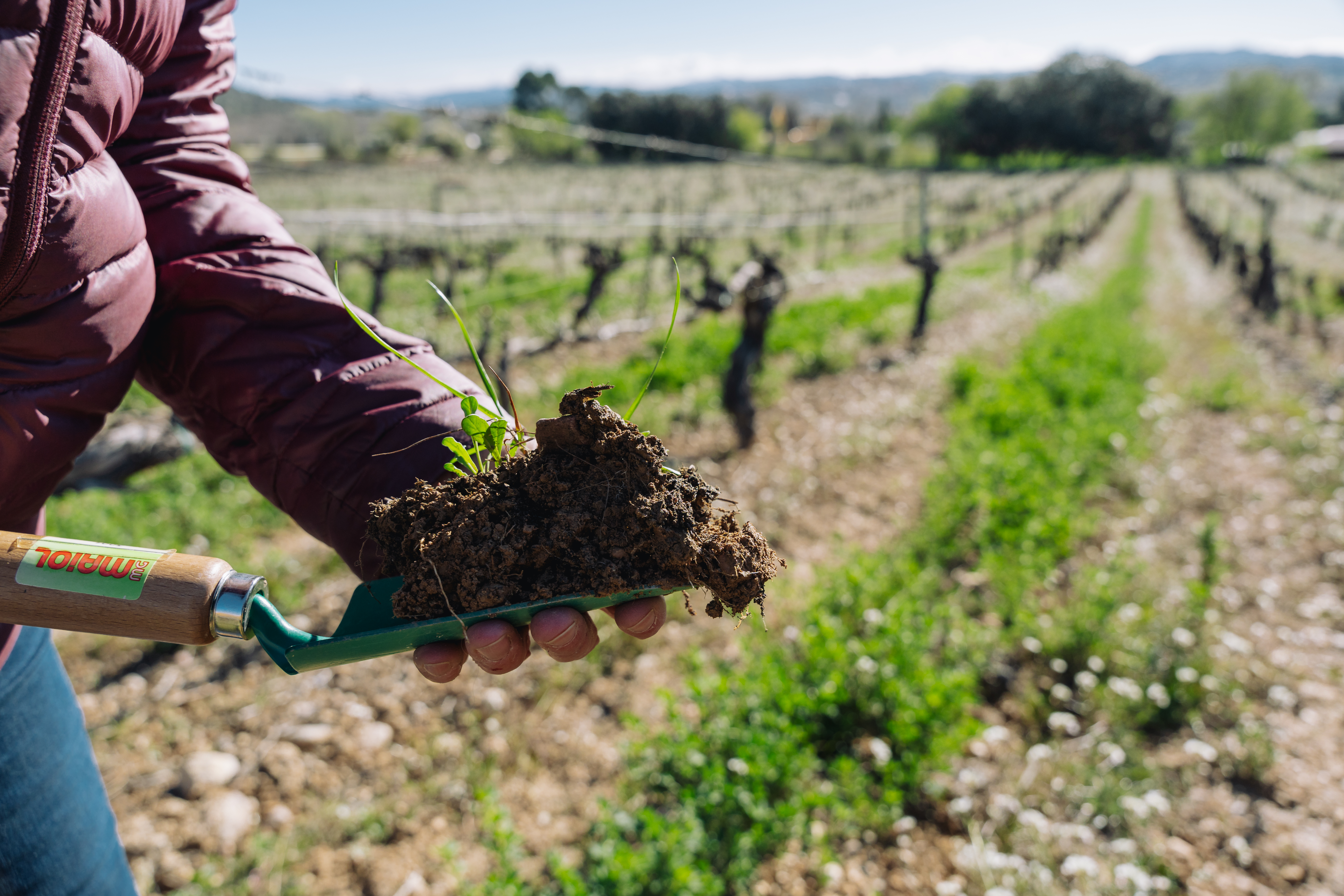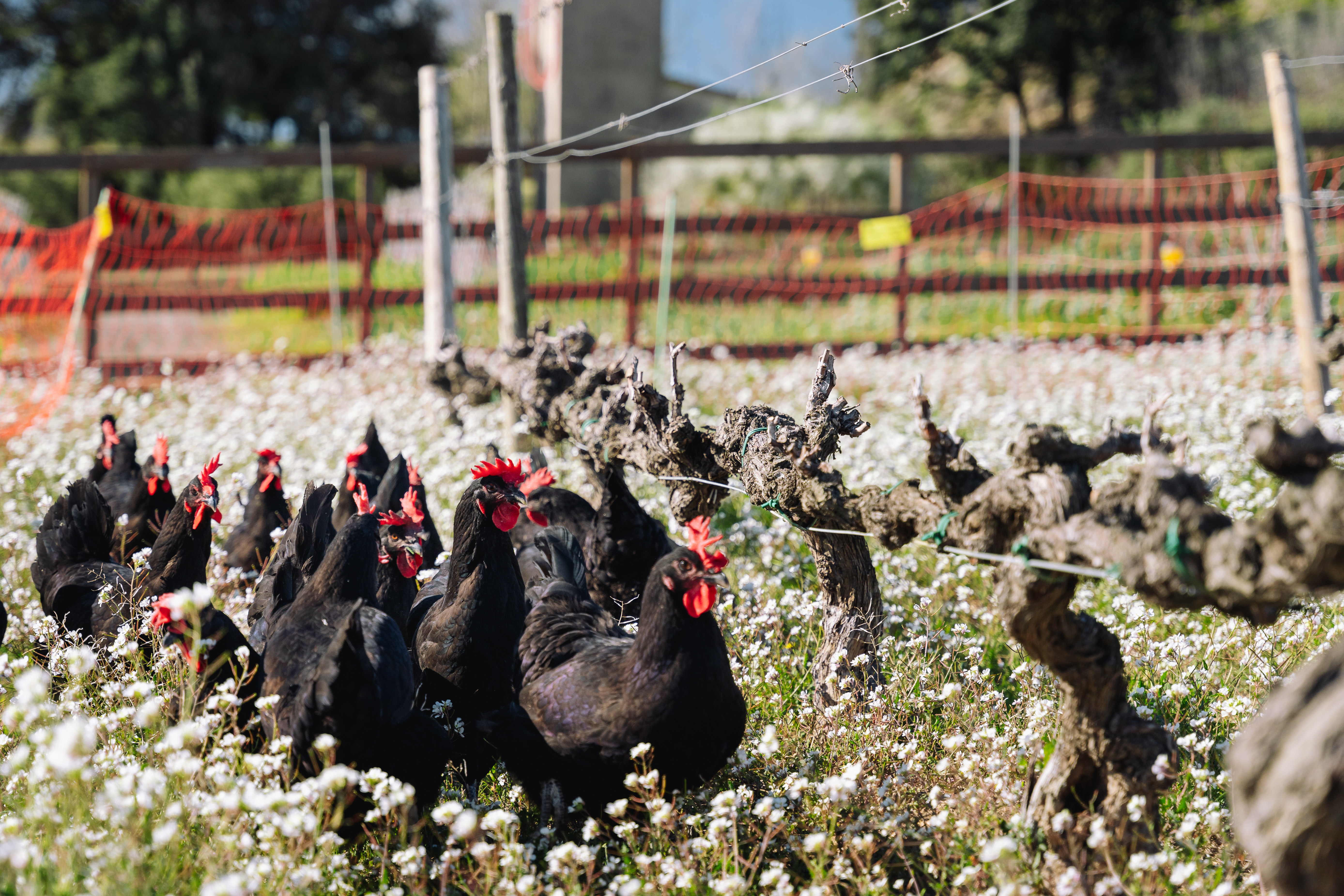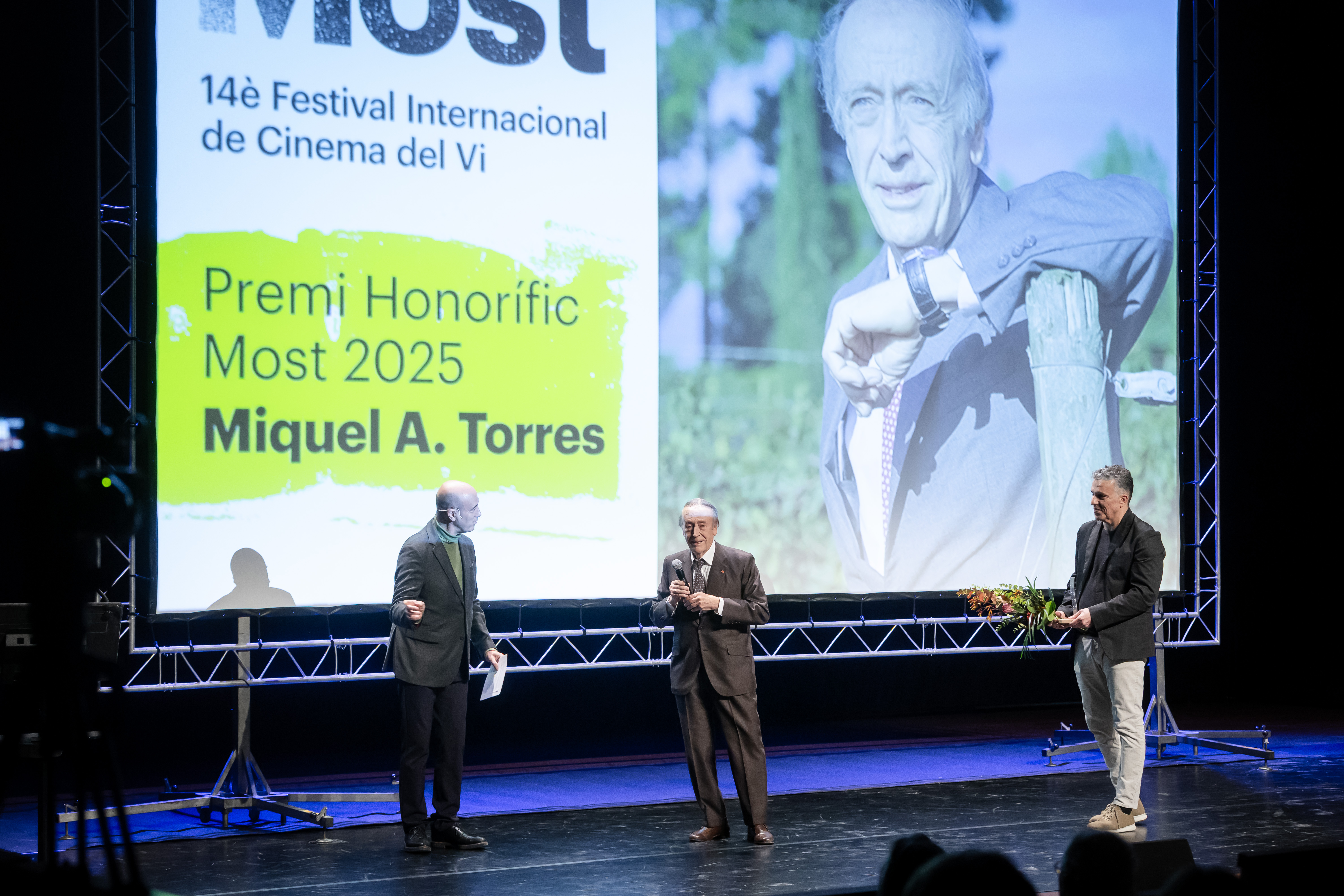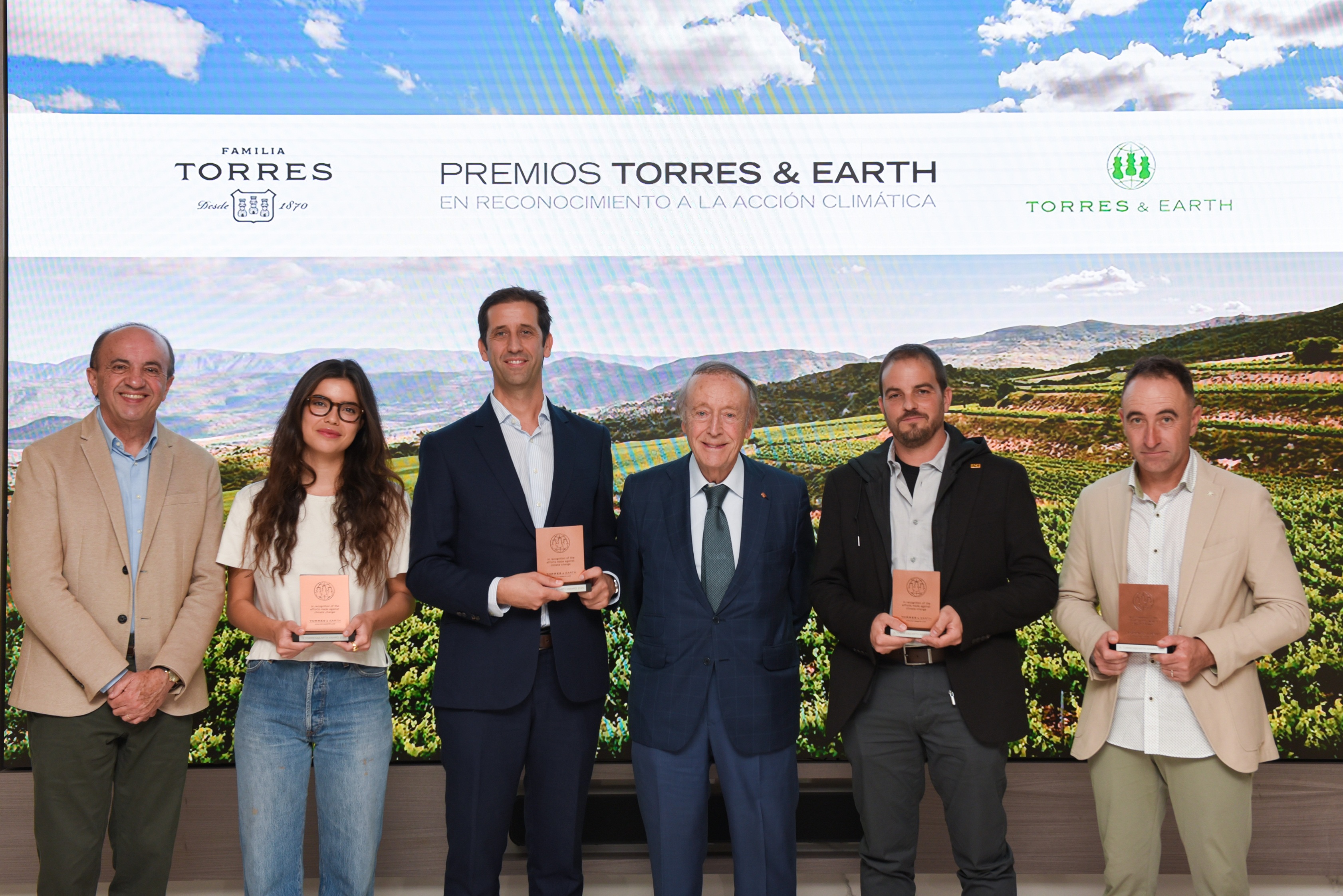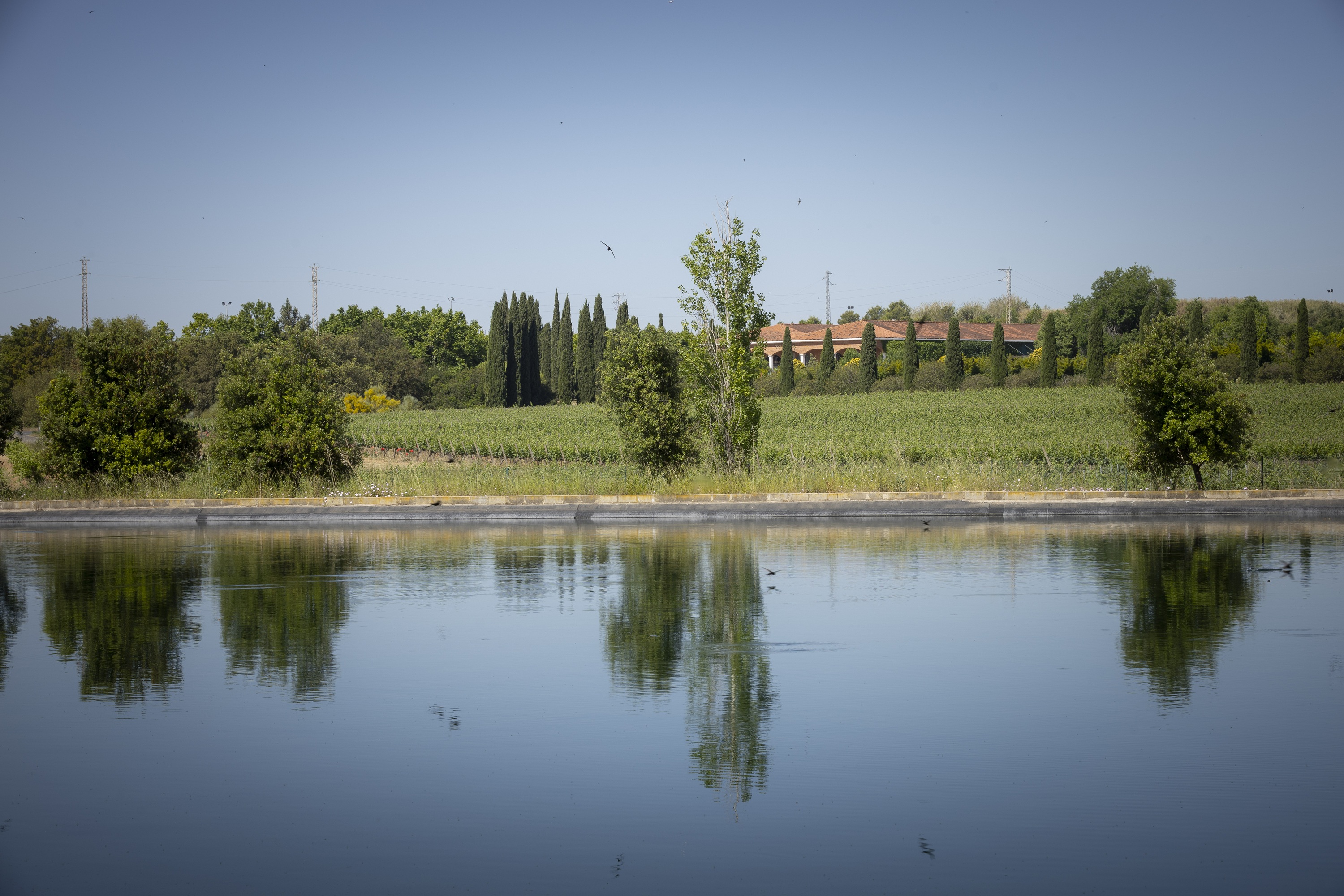The need to promote models that balance the demands of the agricultural sector, nature, and adaptation to drought or rising temperatures is becoming increasingly urgent. The regenerative model exemplifies this balance by prioritising techniques that enhance soil health. Science has already demonstrated that healthier soil can retain more atmospheric carbon and absorb more water, among other benefits. But is this type of agriculture economically viable?
Preliminary results from the Regenera.cat project, in which Família Torres participates, led by CREAF and managed by the Agency for University and Research Grants Management (AGAUR) with funding from the Climate Fund of the Department of Territory, Housing, and Ecological Transition, show that, contrary to common belief, after an initial period of soil recovery, this model can produce the same amount of food as conventional methods and do so at similar or, in some cases, lower costs. For example, courgette production in regenerative horticulture recorded savings of over 30%.
The data was collected over one year by comparing the four regenerative estates participating in the initiative, all located in Catalonia, against plots practising conventional agriculture, which still use pesticides, chemical fertilisers, and heavy machinery for ploughing. Additionally, the team compared 100% pasture-fed cows under two scenarios: those grazing directly on pasture versus those fed with bales of dry grass. To calculate costs and production, a different food product was evaluated at each participating estate: courgettes at Verdcamp Fruits, pears at Pomona Fruits, pasture milk at Planeses, and grapes at Familia Torres’ regenerative vineyards.
Economic costs and production
The team clarified that, although these results were measured during one year of the project, the four estates have been practising the regenerative model for years. Therefore, the calculation does not account for the initial investment required to restore soil health, a process that can take several years before achieving profitability. The positive aspect is that the results demonstrate that both models produce the same amount of food and once established, at equal or even lower economic costs in the case of regenerative methods.
"One of the agricultural sector’s hesitations in implementing more sustainable practices stems from arguments claiming they are more expensive and less productive. These results, although currently on a small scale and requiring further research, are promising," highlights Javier Retana, CREAF researcher, professor at the Autonomous University of Barcelona (UAB), and project coordinator. He also warns that transitioning to this model is not easy, especially in the early years, and must always be accompanied by policies, financial support, and guidance. However, "debunking the myth of low production and high costs is a significant step forward," he adds.
Pears and courgettes: savings on chemicals and fuel
To calculate economic costs, the team conducted a detailed analysis considering personnel costs for actions such as pruning, planting, or applying phytosanitary treatments; machinery costs, including fuel and maintenance or rental; and the cost of field-applied products like compost or fertilisers.
The results reveal that regenerative cultivation saves over 30% compared to conventional methods for producing the same amount of courgettes at Verdcamp Fruits. According to Retana, "In general, we observe the greatest cost reductions in machinery and phytosanitary products like chemical fertilisers or pesticides."
Producing pears regeneratively at Pomona Fruits does show a slight increase in costs, around 10%, but despite this, pear production is 20% higher on the regenerative estate. "The reason is that natural treatments were carried out to prevent pests, which slightly increased costs, but in contrast, production was higher," explains Retana.
As for Familia Torres, final results have not yet been obtained, partly due to the drought experienced in 2024. "We will have to wait for the second year of the project to have definitive data," adds Javier Retana.
Milk production: grazing vs. dry grass bales
At Planeses, dairy cows fed 100% on pasture were compared under two scenarios: those grazing directly on pasture using the Voisin method—where cows are moved daily from plot to plot in a planned manner—versus those fed with bales of dry grass within an enclosure.
The data shows that grazing cows result in significantly lower costs, as expenses are limited to personnel responsible for moving the livestock and milking. In contrast, dry grass bales involve additional costs: harvesting the grass, drying it, transporting it, storing it, and collecting and returning manure to the field.
According to the researcher, using dry grass bales is sometimes unavoidable, especially during periods without fresh pasture, such as winter in high-altitude areas or Mediterranean summers with intense heat. "But if you want to produce 100% pasture milk, grazing directly on pasture is much more profitable whenever possible."
Floral strips, cover crops and other regenerative techniques
The estates participating in the project adopted the regenerative model years ago to restore soil fertility and biodiversity, ensuring food cultivation in the context of a climate crisis. "By increasing organic matter content, the soil’s capacity to store more water in arid conditions and atmospheric carbon also increases," explains Retana.
Some of the techniques practised include eliminating ploughing, maintaining ground cover year-round, increasing plant diversity and production, or combining agriculture and livestock farming.
Each estate has its unique approach and produces different foods. For example:
Planeses (Sant Ferriol, Girona): Raises chickens, hens, and pasture-fed cows, has a vegetable garden, and uses forest resources to create biofertilisers.
Familia Torres (Pacs del Penedès, Barcelona): Dedicated to vinegrowing, uses flocks of sheep and hens to graze among the vines and has installed nesting boxes for bats and birds.
Pomona Fruits (Ivars d’Urgell, Lleida): Grows apples, pears, apricots, and peaches, incorporates pruning remains, live microorganisms, and organic matter into the soil, plants flowers on the edges, and uses donkeys to fertilise the land and control grass in some plots to reduce machinery use.
VerdCamp Fruits (Cambrils, Tarragona): Produces a wide variety of fruits and vegetables, plants flowers among crops to promote biodiversity (floral intercropping), and applies the roller crop technique—a roller that flattens and bends crops alongside weeds at the end of their productive cycle without cutting or shredding them—creating a layer of biomass that acts as natural mulch and green manure to retain moisture.
Future steps
The Regenera.cat project, which concludes in January 2026, continues to work on quantifying the scientific benefits of regenerative agriculture. "We are now measuring other parameters such as carbon and water footprints, the nutritional quality of food, pollinator diversity, and the capacity to retain atmospheric carbon and water," concludes Retana.
In the coming months, the project’s estates will host open days for anyone interested in visiting and learning how they implement various regenerative techniques. Subscribe to the project’s newsletter to stay updated: https://bit.ly/regeneracat.
Funding
The Climate Fund is financed with 50% of the revenue from the CO2 emissions tax on motor vehicles and 20% of the revenue from the tax on facilities impacting the environment.

